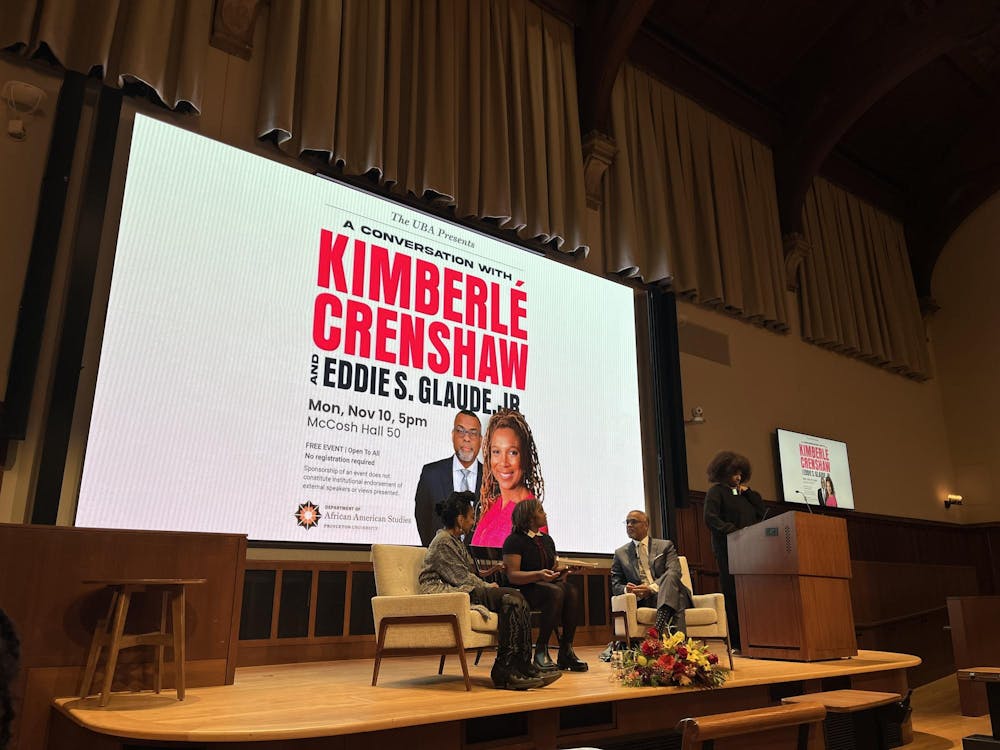In their new book "The Game of Life," Dr. William Bowen, University president emeritus, and co-author James Shulman present a study of intercollegiate athletics, including Princeton's own program.
Bowen and Shulman studied the relationship between intercollegiate athletics and academics. The topics they addressed include recruitment, admissions advantages, classroom performance and leadership roles of athletes in the colleges examined.
Shulman and Bowen's statistics reveal growing competitiveness in college sports, an increasingly aggressive recruiting system, and a decline in the number of "walk-on" — or unrecruited — athletes.
"I have been concerned for a long time with what I suspected might be some fairly significant trends [in intercollegiate athletics]," Bowen said. "We conducted research and wrote the book in hopes that it would get us out of the anecdote range."
"While there was a lot of anecdote and rumor and legend about athletics and their relationship to the broader aspects of collegiate life," President Shapiro said, "this, to my knowledge, is the first detailed study of who these people are, what they're like, what their experiences in college were like, and what's happened to them later in life."
"So I think it will take the whole discussion of intercollegiate athletics a step forward," he added.
The book, which charts the evolution of college sports since the 1950s, takes its data from Division IA public and private universities, Division III universities, coed liberal arts colleges, women's colleges and Division IAA Ivy league universities, including Columbia University, University of Pennsylvania, Yale University and Princeton.
One question "The Game of Life" might raise for its Princeton readership is exactly what the connection is between athletics and academics on campus.
"There is no question that however important one might believe the athletic program is, our central mission is not that. Our central mission is education," Shapiro said.
According to the comprehensive 1994 Report on Athletics compiled by the Trustees' Committee on Student Life, Health and Athletics, athletics matter little in University admissions.
"[The committee] found particularly noteworthy the dean of admission's estimates that approximately half of our student athletes would have been admitted independently of their athletic abilities," the report states. "For the others, athletic skills were an 'extra element' that was decisive for each of them in achieving admission."
In addition, Ivy League schools are required to use an academic index — a compilation of SAT scores and class rank — to ensure that their athletes' scores do not differ significantly from that of the overall student population.

One problem that Bowen highlights appears in the trustees' report — the underperformance of athletes in the classroom.
"The evidence in this book does demonstrate a consistent tendency for athletes to do less well academically than their classmates — and, even more troubling, a consistent tendency for athletes to underperform academically not just relative to other students, but relative to how they themselves might have been expected to perform," Bowen's book read.
The trustees' report demonstrates a similar concern: "There is a full range of academic achievements among athletes, as with other groups and categories. But it is clear that a significant proportion of athletes perform academically at the bottoms of their classes."
In "The Game of Life," Bowen raises another controversial issue — whether or not the precious admissions spaces given to athletes would be better spent on other candidates.
"In a place like Princeton, you can say that about any particular cohort of students . . . that is, we try and create a community here, we try and admit a class of all kinds of people, and we think that overall, everything we do helps support the education culture," Shapiro said.
A wealth of other issues — "athlete culture" and stereotypes against athletes, increased specialization and practice time demands on the student-athlete and the intensity of high school programs — appear in Bowen and Shulman's book. They add a few general suggestions for bridging the gap between academics and athletics, but intentionally avoid specific prescriptions for improvement.
"We tried to set the stage, to create a framework to help others construct a solution that might make some sense," Bowen said.
Nevertheless, the University will continue to review and improve its programs, Shapiro noted.
"My general rule of thinking is that we need to alter almost anything we're doing," he said. "Nothing we're doing is as good as it could be. That includes athletics, but is not restricted to them. I can't think of an activity we're doing that doesn't require some change."







